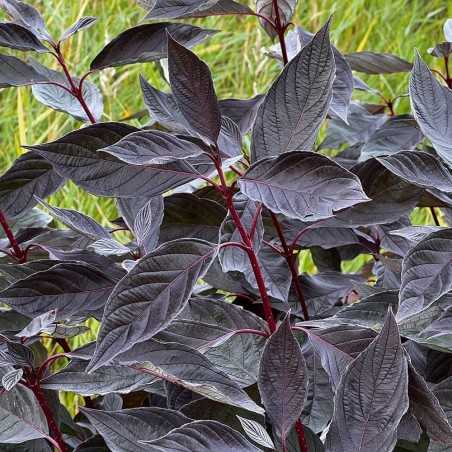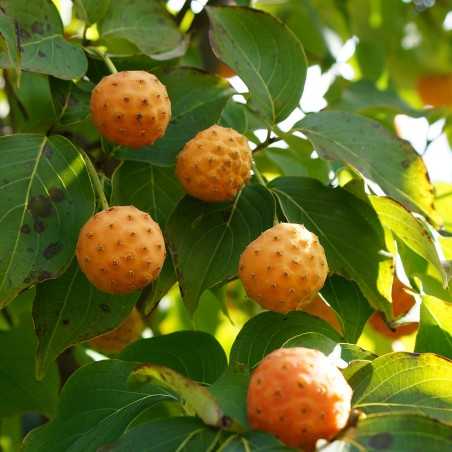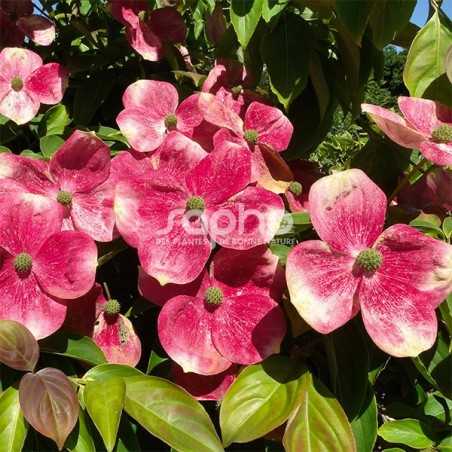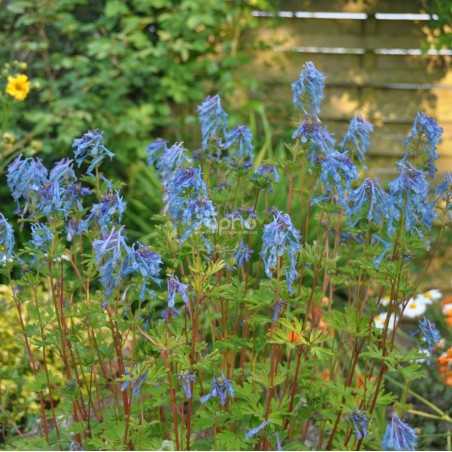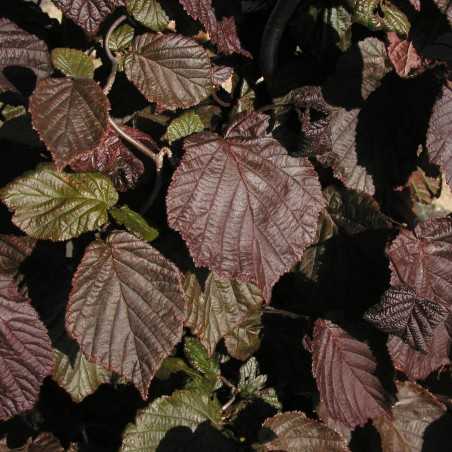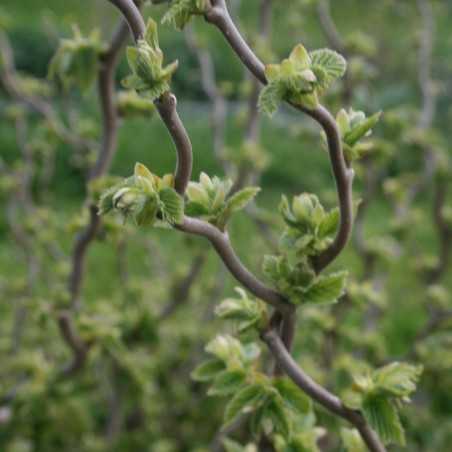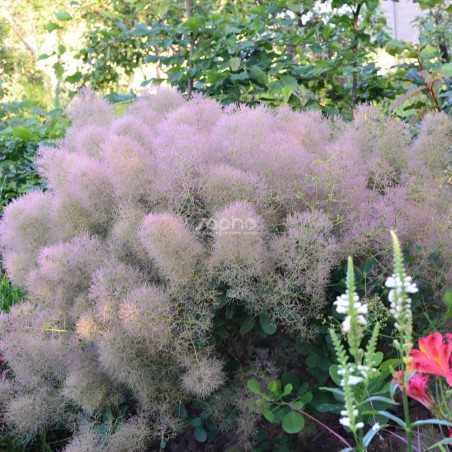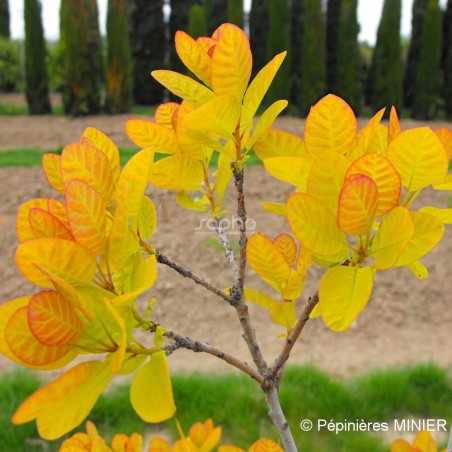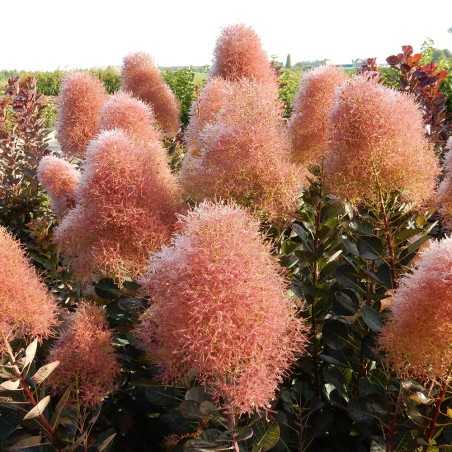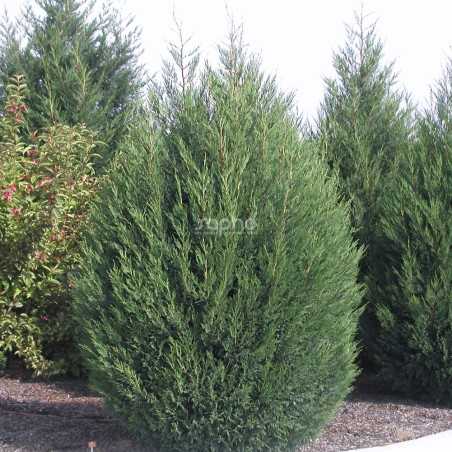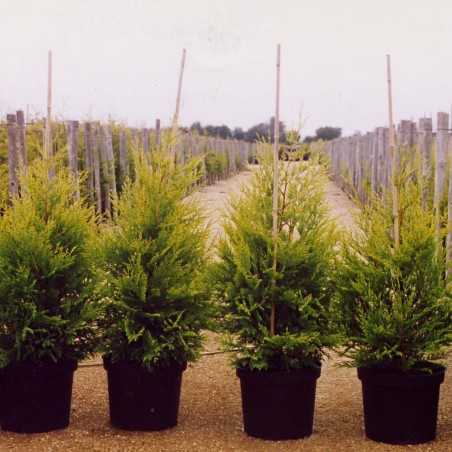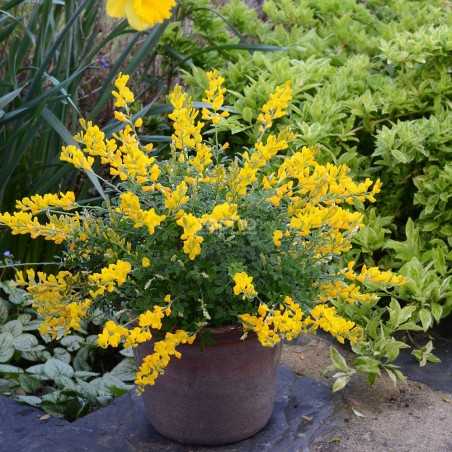Year round attractive and spectacular autumn colours
Dark green spring leaves,
Foliage turns dark purple in summer, ending black at fall
Velvety grey hue on the foliage, especially on the underside, highlights the dark plant
Red stems in autumn/ winter
More upright growth than other Cornus alba, can be used as hedge
Robust, easy-growing, little-maintenance, can adapt to various soil, dry or moist
Filter By
Foliage
Position
Categories
Menu
All our varieties
The elegance of Cornus is enhanced by the originality of its fruit
This variety blooms abundantly with white flowers from late May to early June.
Its decorative fruits, visible from afar, have original colors: yellow evolving into pumpkin-orange when ripe.
Its foliage also changes from green to orange-yellow in autumn.
This large shrub is easy to grow and has a flared habit when young.
Ideal as an isolated plant in the garden.
Spectacular for the size, abundance and changing color of its flowers!
This Cornus is distinguished by its longevity and abundant flowering. Its flowers change color with the seasons, from light salmon to bright pink to red.
In autumn, large red berries appear and persist until hard frost.
Its shape makes it ideal for production.
Its vigor and upright form with flexible branches make it an ideal shrub or small tree for large gardens and landscaped parks.
nb: color evolution may vary according to region and climate.
The pleasure to plant a Corydalis!BLUE LINE® is a real innovation among the Corydalis, due to its long and generous flowering period, which under good conditions can be nearly non-stop from spring to autumn. The spur-shaped flowers of about 35 mm, grow in regularly spaced tiers of thick clusters, carried by numerous reddy brown upright stems. They are deep metallic blue with a white throat and develop a sweet honey-like scent. Flowering begins at the end of April - beginning of May and under good conditions, continues abundantly until September - October, the last clusters of flowers last up to the first frosts. This variety is the result of a cross between C. flexuosa and C. elata. It produces an attractive mat of tender green, lobed foliage which is more vigorous than that of either of its parents. Like the flowers, the leaves remain attractive until the first frosts when the plant takes its winter break.In containers or in the garden - find the pleasure of planting Corydalis again, with this very strong and prolific flowerer.
The corkscrew hazel with purple foliage.This variety combines the charm of the corkscrew hazel and the quality of the foliage of the purple hazel. With a height of about 2,00 to 2.50 m when fully grown, 'Red Majestic' has a good vegetation and similar characteristics as those of the Corylus avellana 'Contorta'. The very purple colour of the foliage during the budding stage and the early spring fades during the summer to a greener shade, depending on the position.The flowers as catkins, in March, are also purple; so is the husk of the fruit, more or less.
A small hazelnut tree, very twisted and supple at the same time, which puts on a magnificent show in winter!
This variety is an improvement on the 'Contorta' variety: more branched, more compact, flexible and less brittle branches, twisted twigs to the extreme...
Catkins appear early on the plant and remain for a long time.
Easy to grow, with a compact, slow-growing habit, this hazelnut is perfect for pots, balconies or terraces.
Astonishing smoke tree, compact and floriferous.'Young Lady', has a particularly dense and rounded shape and is of good growth.Its rounded, green and deciduous foliage has beautiful yellow to red tones in the autumn.This "smoke tree" is covered in spectacular silky, pinky-white plumes from June onwards. After cutting the wilted flowers, and under good conditions, new stems appear to flower again until October.In shrub borders or in pots, 'Young Lady' is light and decorative at the same time.It can also be used with cut flowers.
A cultivation which will wake up beds and mixed hedgesGOLDEN LADY® 'MINCOJAU3' is a real improvement on the existing golden varieties. In spring it has beautiful young, bright orange shoots which progressively turn golden yellow. The foliage turns a yellow green in summer and is not affected by the sunlight. It becomes orange in the autumn.The cream - pink inflorescences appear in July.Being dense and branching naturally, this cultivation is easy to grow in containers.The bright and varied tints of the foliage are at their best when the shrub is grown in a bed or a mixed hedge.
Exceptional floridity and decorative plumes from early to late summer!
This shrub has an exceptionally abundant and long-lasting bloom of large, deep-pink spikes, which appear on all branches in early summer, with an upturn in the season.
Its uniform purple foliage is a perfect match for its flowers.
Its upright, well-branched habit makes it easy to grow and manage in the garden.
Hardy and dry-hardy, it adapts perfectly to the soil.
Precious in nurseries and recommended for hedges.
The vegetation of this clone is bushy and wide; 'Blue Jeans' grows from several stems. It branches well and can show young foliage at the base.
It grows fast and does not need to be staked if grown in containers.
Its blue-green colour is original.
Its resistance to cold has been proved in Holland.
Its adaptation to pruning makes it very interesting for monospecific hedges.
Trophies:
Gold Medal at Plantarium 2009 (Boskoop - NETHERLANDS).
For a hedge with golden foliage.
The golden foliage of this variety of X Cupressocyparis is of good sun resistance.
It is quite column shaped, with denser foliage than the other varieties with golden foliage.
Vigorous growth. EXCALIBUR GOLD needs little care and is very much recommended to be planted in medium high hedges.
In the nursery, it needs neither pruning nor a prop.
Just like a sun! Must be potgrown and protected during cold winters.This INRAE - EUROGENI variety has been selected for its regular growth, more compact and branched than the standard species, even without trimming. For production in nurserys no regulators are needed.Beautiful healthy dark green foliage and fine wood. The abundant scented flowering in March-April is 8 - 10 days later than the Cytisus Racemosus and of a more orangey yellow.A real sun in spring, PHEBUS® must be potgrown and protected during cold winters.Trophies: Bronze Medal at Innovert® 2016 Horticulture category (Angers - FRANCE)

